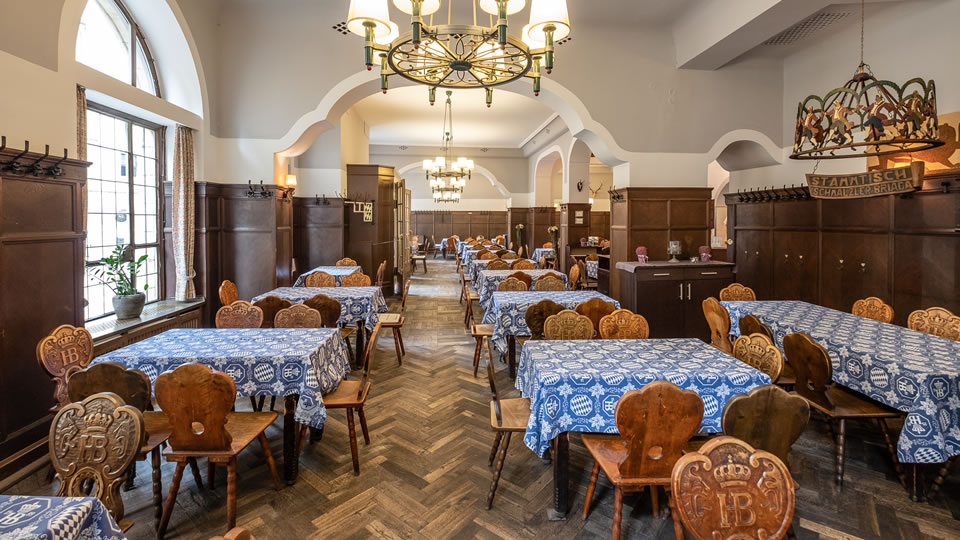The Hofbräuhaus has been at home here since 1930 and it has been owned by the Schafbauer family since 1988.
Dear guests,If you look out of the window at the Old Town Hall, you can see the great past of the imperial city of Regensburg: over there in the light yellow Reichstag building, the mighty of the West met for over half a millennium and moved Regensburg into the center of European world history. Emperors and kings, electors and the greats of the empire felt so comfortable in the noble and built-up city on the Danube that they installed the Perpetual Reichstag in their walls from 1664 to 1806. From then on, the Council's former dance hall became the Reich Hall, in which the “oldest German parliament” determined the fortunes of the Holy Roman Empire of the German Nation. Its political importance may have been limited. However, international court life entered Regensburg with the numerous envoys and their servants.
Here, where you have now taken a seat, on the square of the Hofbräuhaus, stood the house “Zum golden Hirschen”, which is said to have been the apartment of the chaplain of the Ahakirche. In the 16th century, the mighty estate with courtyard and tower belonged to the Schiltl patrician family. On September 26, 1575, the Elector of Cologne moved with a large entourage to Regensburg and took "his accommodation in the quarters here with Christoph Schiltl". The plump Elector Clemens had an excellent view from the window of the “glittering embellishment of the elevators”, of the envoys' magnificent carriages and their mounted entourage. He saw the cheering people pushed back by the halberds and heard the calls of the heralds. He got dressed, dusted the wig with silver powder, mounted his four-horse carriage in the courtyard, and joined with his scribes and the liveried servants in the train of the empires, accompanied by timpani and trumpets.
When you look out of the window at the bay window of the Imperial Hall in the Hofbräuhaus. There you once saw the flip side of the glorious old days. The so-called fool's house, a kind of iron cage, was built under this oriel in 1506. There the "night disturbers, bullies and the like individuals were blocked," writes the chronicler. It is good that the city council had this pillory demolished in 1810.
Horst Hanske (1935 to † 2016)

























